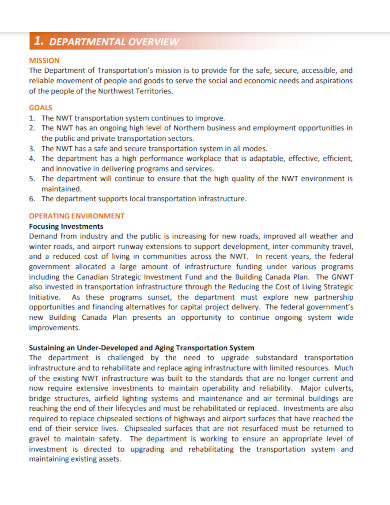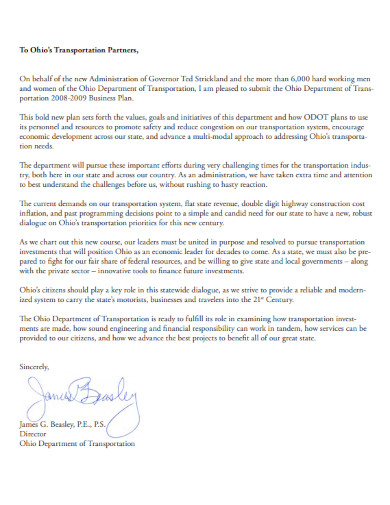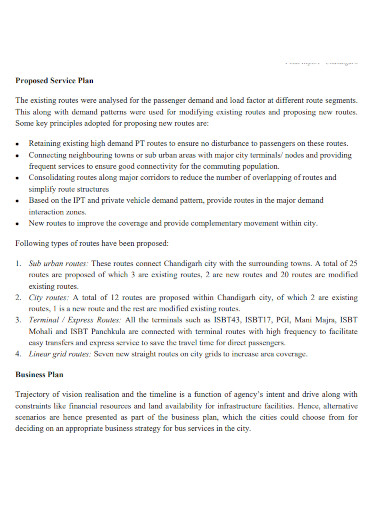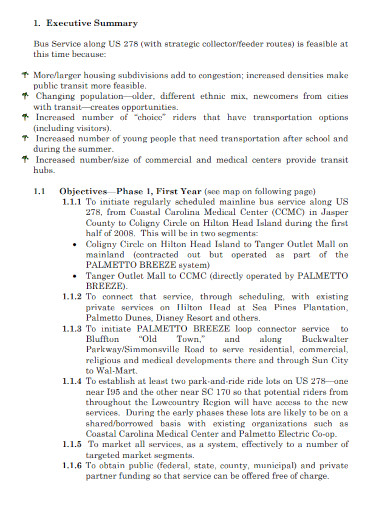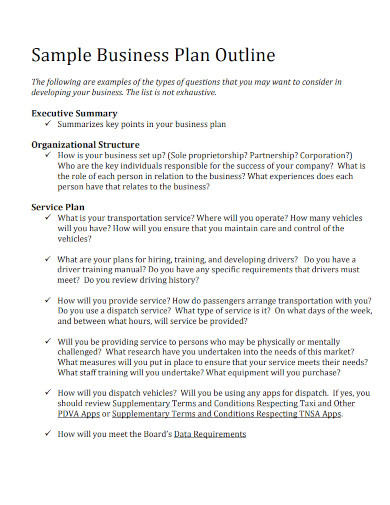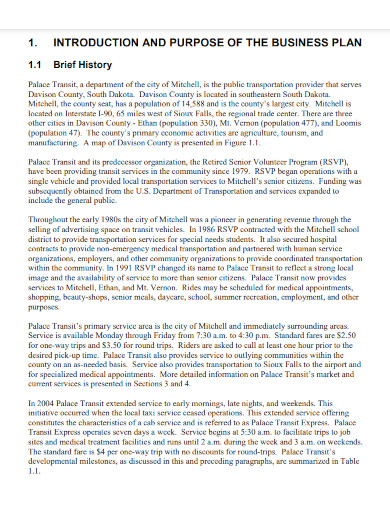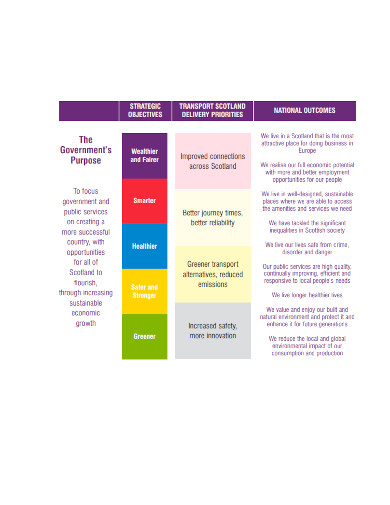The transport business is a massive one that encompasses the transportation of people and products. The transportation industry has recently experienced a lot of growth thanks to the expansion of various new players in the market, such as organizations that rent out cars, trucks, and temporary offices, amongst other things. The transportation industry receives a significant boost due to the ever-expanding economy and the ongoing movement of workers from one city to another. This movement creates many opportunities for new sales businesses, including movers and packers, food trucks, bike rentals, and many more.
9+ Transport Business Plan Samples
1. Transport Business Plan
2. Transportation Business Plan Example
3. Service Transport Business Plan
4. Regional Public Transportation Business Plan
5. Transport Ministry Business Plan
6. Sample Transport Business Plan Outline
7. Business Plan for Palace Transit
8. Transport Scotland Business Plan
9. Sustainability Transport Business Plan
10. Analysis of Strategic Planning in Transport
What Is a Transport Business Plan?
A transportation business plan provides an overview of your transportation company as it exists at present and outlines your expansion strategy for the subsequent five years. It describes your company’s objectives and the approach you will take to achieve those objectives. In addition to that, it requires conducting market research to back up your plans.
How to Make a Transport Business Plan
The foundation of a successful business plan for a transportation company is typically the same as the foundation for any other form of business plan. Entrepreneurs must first choose which type of transportation business suits them and the current market condition. Following that, an additional significant initial stage is to establish the aims and business goals of the business and then begin from that point.
1. Selecting a Business Venture
As was discussed, determining the kind of commercial enterprise that will be pursued is the first step in launching any business. This decision was taken after considering several variables, including the entrepreneur’s competencies, the amount of capital investment that must be made, the present market state, the availability of driver partners, licenses and permissions, and other similar considerations.
2. Collecting Information
The availability of a wealth of information is essential to the success of any enterprise. For the efficient operation of commercial organizations, it is vital to have information relating to all parts of the business, regardless of how large or small they may be. When operating a transport company, the business owner is responsible for compiling all pertinent information concerning the permissions required for interstate transport or permits unique to the items being transported.
3. Getting a Proper License
The entrepreneur will first need to gather all the relevant information and then establish the overall structure of the business before moving on to the next step, which is to obtain the licenses and licenses required to run the firm. These permits will include the ability to carry goods within the state or beyond national borders, depending on the circumstances, and registration of cars used for business reasons. According to the legislation, a vehicle that has been registered for personal use may not be utilized for any business-related activities.
4. Purchasing of Vehicles
This is the most crucial part of the business because it will determine whether the business is successful or unsuccessful in the long run. Suppose the cars that are purchased are not in line with the goal or concept of the business. In that case, the entity may run into various issues, such as failing to fulfill the target scale of operations, wasteful wastage of fuels, overspending on the cost of gasoline, etc.
FAQs
Which is the best transport business?
Towing Service, Taxi Cab Business, Trucking, and Car Hire.
What should I include in my transportation business proposal, and how do I draft it?
Typically, a transportation proposal should include an overview of the transport company, detailing the services provided and the vehicles available for transportation.
How do transport businesses attract clients?
Communicate with the shippers, get in touch with firms that handle a significant amount of shipping, and pitch your services to them so that you may expand your list of customers.
If you are interested in either of these options, you need a business plan to launch a new transportation company or expand an existing one. To boost your chances of success in the transportation sector, developing a business plan will assist you in, among other things, planning the expansion of the company and raising capital, should you require it. Your firm will likely see growth and change during the next year, so your business plan should be reviewed and revised every year.
Related Posts
9+ Trucking Business Plan Template - PDF, Word
FREE 9+ Delivery Service Business Plan Samples [ Food, Home ...
FREE 10+ Logistic Report Samples in MS Word PDF
FREE 10+ IT Services Proposal Samples [ Support, Consulting ...
FREE 5+ Investment Company Business Plan Samples [ Group ...
FREE 14+ Travel Business Plan Templates in PDF MS Word ...
FREE 10+ Logistics Proposal Samples [ Service, Project ...
FREE 10+ Transportation Business Report Samples [ Truck ...
FREE 4+ Waste Management Business Plan Samples in PDF MS ...
FREE 10+ Software Company Business Plan Samples in MS Word ...
FREE 8+ Cafeteria Business Proposal Samples in MS Word ...
FREE 25+ Company Profile Samples in PDF
FREE 10+ Remote Work Emergency Plan Samples in MS Word ...
FREE 8+ Food Supply Proposal Samples in PDF
FREE 9+ Sample Emergency Response Plan Templates in PDF ...

